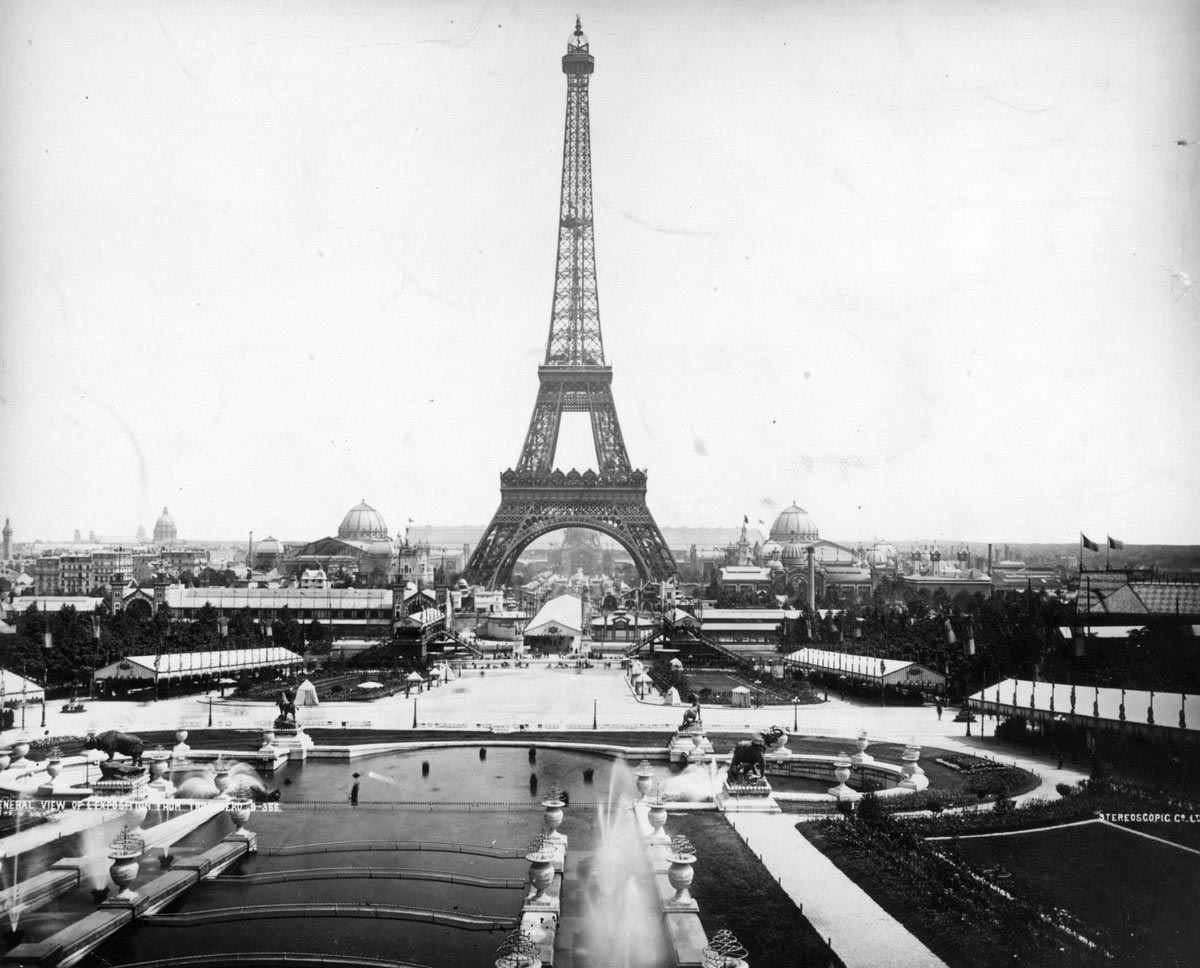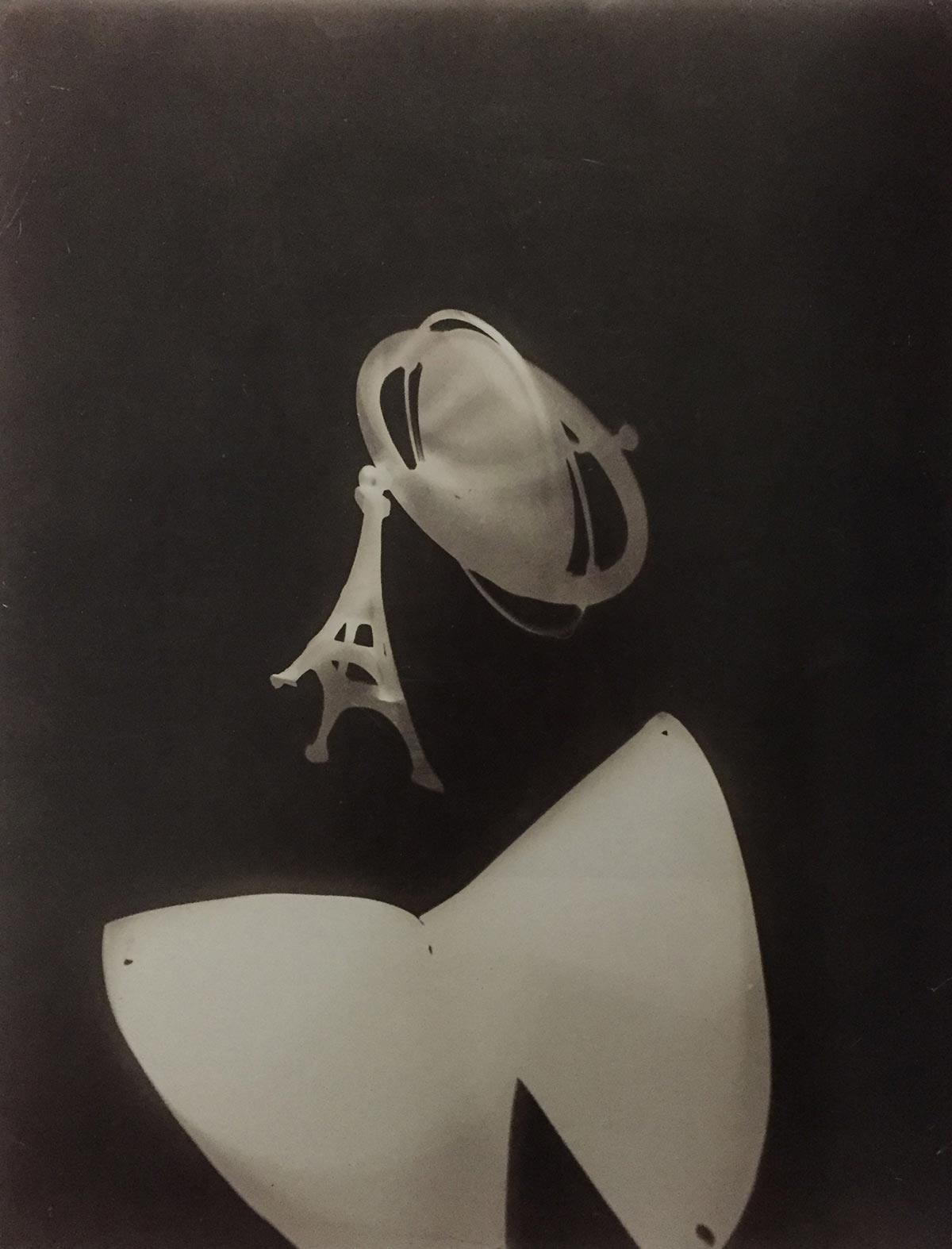The modern era prompted a wave of new ideas that formed in opposition to tradition. The emergence of new scientific knowledge and growing industrialization called for societal improvement and personal understanding for people all across the modern world, inspiring architects, engineers, and artists. New materials and uses of technology led to a greater demand for old traditions to give away to new ideas, making the ideal conditions for László Moholy-Nagy to capture light as an expression of the human ideals. On the subject he stated “Such scientific and technological advances almost amount to a psychological transformation of our vision” (Moholy-Nagy, 1969). The modern era changed the way people viewed the world and their relationship with technology.
Just a few decades before Moholy-Nagy exposed his first image on photosensitive paper to create the photogram, the Eiffel Tower (Figure 1) had been unveiled at the World’s Fair in 1889, standing above Paris as a monument to technology, manufacturing and transformation (Remington, 2003). Fitting then, that the spirit of change and experimentation embodied the modernist movement could be so figuratively and literally captured in one of a series of photograms by Moholy-Nagy (Figure 2). Conversely, the photograph of the opening of the Eiffel Tower also serves as an example of what had been driving photography of the last few decades. The image is of fine detail and captures the pristine nature of the surrounding streets and buildings as they were on that specific day. Moholy-Nagy would take the notion of recording light into the realm of artistic expression, rather than let it simply record a moment in history.

The photogram shows a dramatic use of black to white tonality, creating a highly contrasting image. The forms are recognizable not only as an image, but the shades of grey give the image an illusion of depth, giving the image a sculptural quality. By including abstract forms, Moholy-Nagy uses light captured as a medium for expression, rather than documentation. This “materialization of light” (Witkovsky, 2016) allowed for the use of photography as a medium more similar to paint and canvas than the more conventional approach with a camera as in journalism and portraiture. With it, Moholy-Nagy could embody himself and his own movements into each photogram all without the use of traditional materials. He said about the photogram, “One may paint with light as surely as one can paint with oil and pigment” (Moholy-Nagy, 1969). The inclusion of recognizable forms such as the gyroscope and Eiffel Tower imply an abundance of technology and prevalence of the appeal of modernist ideals.

Quickly rejecting the idea that photography had a set of rules, his cameraless experiments allowed for a simultaneous use of many mediums, blending together photography, painting, writing, and sculpture (Witkovsky, 2016). During much of the time frame for the modernist movement, photography was simply regarded as a means of mechanical recording rather than being elevated to the status of art in its own right (Moholy-Nagy, 1969). In his textbook, Moholy-Nagy wrote, “Fundamentally new discoveries cannot long be confined to the mentality of bygone periods” (1969). He viewed the role of the photograph to be an ideal instrument of expression in visual media, despite its use as a more journalistic and scientific origins. His goal became to push photography into a means of sensory and expressive impact rather than a simple function of reproduction and accurate portrayal. Attentions in the modern era were shifting from a mere photographic rendering of an event to the idea of controlling the effects associated with capturing light.
“One may paint with light as surely as one can paint with oil and pigment.”
—Moholy-Nagy, 1969
Along with the modern era came a set of rules aimed to define art based on the medium in which it was presented. Some of these rules imposed the idea of medium specificity, where the medium is defined by its traditional and raw materials as well as a precedent for their use by convention (Bernstein, 2004). However, a few artists of the modern era saw this as a limitation on their work and defied the notion with unorthodox use of materials. Moholy-Nagy had the desire to break down the idea of medium specificity and make use of his interest in interdisciplinary work and experimentation with mixed media (Witkovsky, 2016). His photograms turned the notion of what traditional photography should capture, and bent the technology to his own purposes and his own processes.
Moholy-Nagy believed that art and technology could be harnessed to make the world a better place (Witkovsky, 2016). Artists using technology to inform their art and push ideas forward, will always remain on the edge of modernity. Artists, designers, engineers, and architects must open up to possibilities of a new use for a material. Looking to other areas of study and merging ideas through interdisciplinary collaboration can help to inform the work of anyone in a creative field. The photogram with the Eiffel Tower reminds us that innovation marvels are just a starting point for more innovation and experimentation.
See the project: Materialization of Light and the Photogram